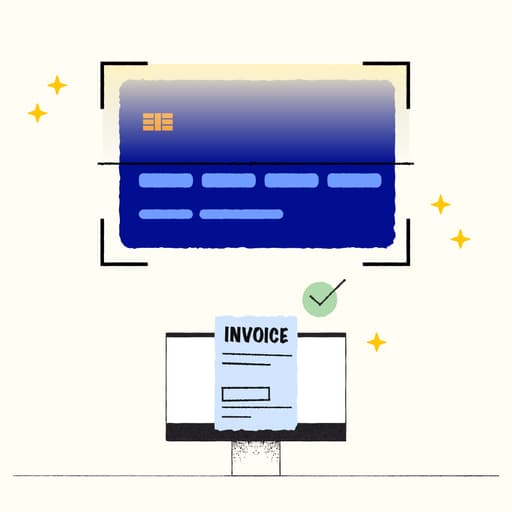
10 Ways Digital Payments Reduce Costs, Improve Efficiency, And Build Better Customer Relationships
- 12 min read
Digital payments can help accelerate cash flow and improve efficiency while reducing labor and administrative spending.
In this blog, we'll explore the numerous benefits of embracing digital payment methods, for both sellers and buyers alike.

B2B merchants must keep costs low and service levels high in today's competitive business environment. One way to do this is by accepting digital payment methods, thereby replacing traditional paper-based payments.
Digital payments can help accelerate cash flow and improve efficiency while reducing labor and administrative spending. You can accept one of many digital payments, such as ACH transfers, real-time payments (RTP), wire transfers, credit/debit cards, and ePayables connected with virtual cards.
The use—and acceptance of—digital payment methods has numerous benefits for both sellers and buyers alike. For sellers, digital payments offer an easy and secure way to receive customer payments. And by adopting digital payment methods, accounts receivable (AR) personnel can reduce the time spent manually processing payments and gain efficiencies.
Some of these efficiencies are improved speed and accuracy, increased automation, enhanced reporting and data analysis, and an improved customer experience.
Additionally, accepting digital payments can help increase sales. Customers are more likely to purchase goods or services if they can pay using payment types that are more aligned with how they make purchases as consumers, for example.
In this article, we’ll explore how sellers can accept digital payments to:
4 ways accepting digital payments improves customer relations
When it comes to running a successful business, customer relations are essential. According to a survey of 103 finance and business services leaders conducted by SSON and Versapay in 2022, 84% of respondents indicated that customer experience (CX) is an important aspect of their accounts receivable (AR) process. And having strong customer relationships lead to higher customer satisfaction rates.
Payments have also become an integral part of the customer experience worldwide. According to a J.P. Morgan and Forbes survey, 85% of global executives agree that optimizing payments is critical to providing customers with satisfactory outcomes.
A new report from Versapay based on a survey of 1,000 C-level executives has found that the payment process is a weak point in the B2B customer journey. According to the survey, 73% of respondents acknowledged that their invoice-to-cash cycle often causes negative customer experiences. Additionally, 85% reported that poor communication between accounts receivable teams and customers has led to unpaid invoices.
💡 The takeaway: By evaluating customer satisfaction through a focus on billing and payment experiences, you can identify areas where you need to make improvements. And luckily, you can improve customer relations by embracing digital payment methods.
With the rise of digitization and automation, customers expect more convenient payment options along with access to faster payments, greater security, and improved customer service to ensure a seamless experience. In accepting digital payments you can meet those expectations and more.
Here are 4 ways you can improve customer relations with digital payment methods:
Digital payments are convenient for customers
Digital payments help sellers build relationships with customers
Digital payments provide sellers with a convenient, reliable way to process invoices
Digital payments allow sellers access to insights into customer payment trends
1. Digital payments are convenient for customers
Digital payments can help sellers expand their sales channels and reach more customers by allowing them to accept payments through various channels, such as email, eCommerce, payment portals, and wire transfers.
This omni-channel expansion—and digital payments—is convenient for buyers, too, who can make purchases through their preferred channels. Overall, the ability to accept digital payments can significantly benefit sellers and improve customers' buying experiences.
2. Digital payments help sellers build relationships with customers
The accounts receivable or invoice-to-cash process can significantly influence building relationships with customers because it is a critical touchpoint in the customer journey. This process involves handling invoices, payments, and related disputes, which can significantly impact the overall customer experience.
If the invoice-to-cash method is smooth, convenient, and efficient, it can create a positive customer experience. By providing a convenient and reliable process through digital payments, businesses can demonstrate their commitment to meeting the needs of their customers and build stronger relationships over time.
3. Digital payments provide sellers with a convenient, reliable way to process invoices
Digital payments offer customers a convenient and reliable way to make quick transactions. When invoices are processed efficiently, sellers can avoid common issues such as payment mistakes or delays that can cause frustration for buyers.
In addition, with digital payment solutions, invoices tend to close faster and more accurately, leading to increased buyer satisfaction and fewer payment disputes. This can help sellers build stronger customer relationships by demonstrating trust and reliability.
4. Digital payments allow sellers access to insights into customer payment trends
Digital payments provide an avenue of insight that can be incredibly beneficial to B2B merchants, giving them valuable data and information about customer payment trends. With digital payments, you can quickly identify how customers prefer to make payments, allowing you to understand their spending habits and preferences better to develop strategies that more directly meet their needs.
This knowledge helps lead to more informed decision-making regarding payment practices, helping you keep current on your customers' preferences. As a result, digital payments can give you a competitive edge while providing customers with modern and secure payment methods.
3 ways accepting digital payments reduces time, labor, and operational costs
As a B2B seller, you are no stranger to the costs associated with processing payments. Processing checks manually, making trips to the bank to deposit checks or cash, or using lockboxes can take up valuable time and resources. These activities are also tedious and prevent your highly-skilled accounts receivable employees from performing more strategic, impactful jobs such as:
- Collaborating with sales teams to identify and address any issues that may be impacting payment
- Building and maintaining relationships with key accounts
- Analyzing and optimizing the accounts receivable process to increase efficiency and reduce cost
- Analyzing data and trends to identify areas of risk and opportunity in the accounts receivable process
Here are 3 ways you can reduce time, labor, and operational costs by accepting digital payments:
Digital payment solutions eliminate manual processes and save time
Digital payments reduce lockbox costs
Digital payments cost less to process
1. Digital payment solutions eliminate manual processes and save time
Digital payment acceptance helps eliminate the manual processes that require time and energy from your AR staff. For example, instead of manually retrieving and entering check numbers and applying payments to outstanding invoices, or traveling back and forth from the bank collecting physical payments, digital payment solutions allow you to accept electronic funds transfers (EFT)—along with other payment types—automatically, and often in real-time.
This automation can reduce the time spent on administrative or time-consuming processes–like cash application. A digital payment system enables you to focus on accelerating cash flows and growing your business instead of managing paperwork.
2. Digital payments reduce lockbox costs
When you receive payments via check or cash, they must be held in a secure location until you deposit them into the bank. Lockboxes provide an additional level of security but are costly. By transitioning to digital payments, you can eliminate these added expenses while maintaining a secure system for holding funds until you transfer them into your bank account.
There are also challenges associated with using lockboxes for cash application. One potential issue is that it can be challenging to extract remittances from lockboxes, as banks often combine and send all remittances as one. This can complicate the cash application process and require additional manual efforts to apply payments to the correct invoices properly.
Digital payments, particularly those made through a payment portal, can help alleviate this issue.
3. Digital payments cost less to process
Another advantage of accepting digital payments is that processing these payments often comes with lower fees than traditional methods such as checks or cash deposits. As a result, you lose less money in fees from banks or organizations processing paper checks or cash deposits.
In addition, by using digital payments, you can benefit from interchange optimization, which can result in additional cost savings.
3 ways accepting digital payments improves efficiency in back-end processes
As the business landscape continues to evolve, it is important to consider digital payments to improve customer experience and overall efficiency. It’s also important you continue to focus on streamlining traditional back-office accounts receivable processes—and digital payment acceptance can support these efforts.
Here are 3 ways accepting digital payments eases administrative, back-office burdens for accounts receivable teams:
Digital payments drive data accuracy improvements
Digital payments help prevent disputes
Digital payments are easy to scale
1. Digital payments drive data accuracy improvements
Incorporating digital payments into ERP systems provides a reliable source of data that eliminates the need for manual entry and potential discrepancies.
Additionally, it allows you to capture more granular information, such as payment terms and delayed payment notifications through the use of electronic invoicing and payment systems. These systems often include features such as the ability to specify payment terms and schedule payments for a later date. This information can be automatically captured and stored in the system, making it easily accessible and searchable.
You can search this data to track how quickly customers pay their invoices. Having improved data accuracy helps in the account reconciliation process between the accounts receivable and accounts payable departments. It also improves cash flow management by providing timely insights into customer payment habits. Based on these insights, you can begin taking proactive steps to reduce any risks associated with late or non-payments.
2. Digital payments help prevent disputes
Disputes can be costly and time-consuming. The Versapay and Wakefield survey—of 1,000 C-level executives—found that nearly two-thirds of executives (64%) reported that an invoice dispute had resulted in the threat or initiation of a lawsuit. Of these, 32% said they had to use litigation to resolve the issue. Even when they did not take legal action, the lawsuit threat can be disruptive and costly for businesses.
Legal issues are not the only burden for accounts receivable teams regarding disputes. In this survey, nearly all businesses (98%) report that upper management is often involved in payment issues or dispute resolution. Of these, 78% say this happens at least sometimes, while 44% say it happens frequently or all the time. Additionally, 41% of respondents identified a breakdown in the customer relationship as the direct cause of an invoice dispute.
Digital payments make it easier to automate vendor dispute resolution processes, leading to fewer disputes. For instance, when buyers make payments through a payment portal, the indicated invoices are automatically credited in real time, reducing the likelihood of incorrectly applied payments and the need for disputes.
In addition, digital payment solutions can facilitate faster transactions, eliminating delays in payment receipt and reducing confusion on the accounts receivable team, leading to fewer disputes.
3. Digital payments are easy to scale
Digital payments provide convenience for both buyers and suppliers alike. They eliminate manual paperwork such as check deposits and bank transfers. Making payments with and accepting digital payments streamlines the entire invoice-to-cash process while ensuring secure transactions with minimal risk of fraud or misuse of funds.
Furthermore, the benefits of digital payments are scalable because they reduce the need for cumbersome manual processes. For example, you can process transactions more efficiently and handle more payments without incurring additional costs or requiring other staff.
This scalability can make it easier for businesses to expand their offerings and take on more clients without being constrained by administrative tasks. You can manage payment systems more efficiently, process more customers per day, and expand income opportunities with minimal additional overhead.
In accepting digital payments, you can easily offer your customers the option to automatically make recurring or one-time payments, too. The flexibility of digital payments makes them ideal for businesses with multiple customers with different needs when making payment arrangements.
Use digital payments to improve customer relations, cut costs, and improve efficiency
Businesses can improve customer relations, reduce costs and improve efficiency by accepting digital payments. This change will help save time and labor for processing payments, improve data accuracy, and prevent vendor disputes.
Digital payments are also scalable, so you can grow without worrying about back-end processes becoming overloaded.


